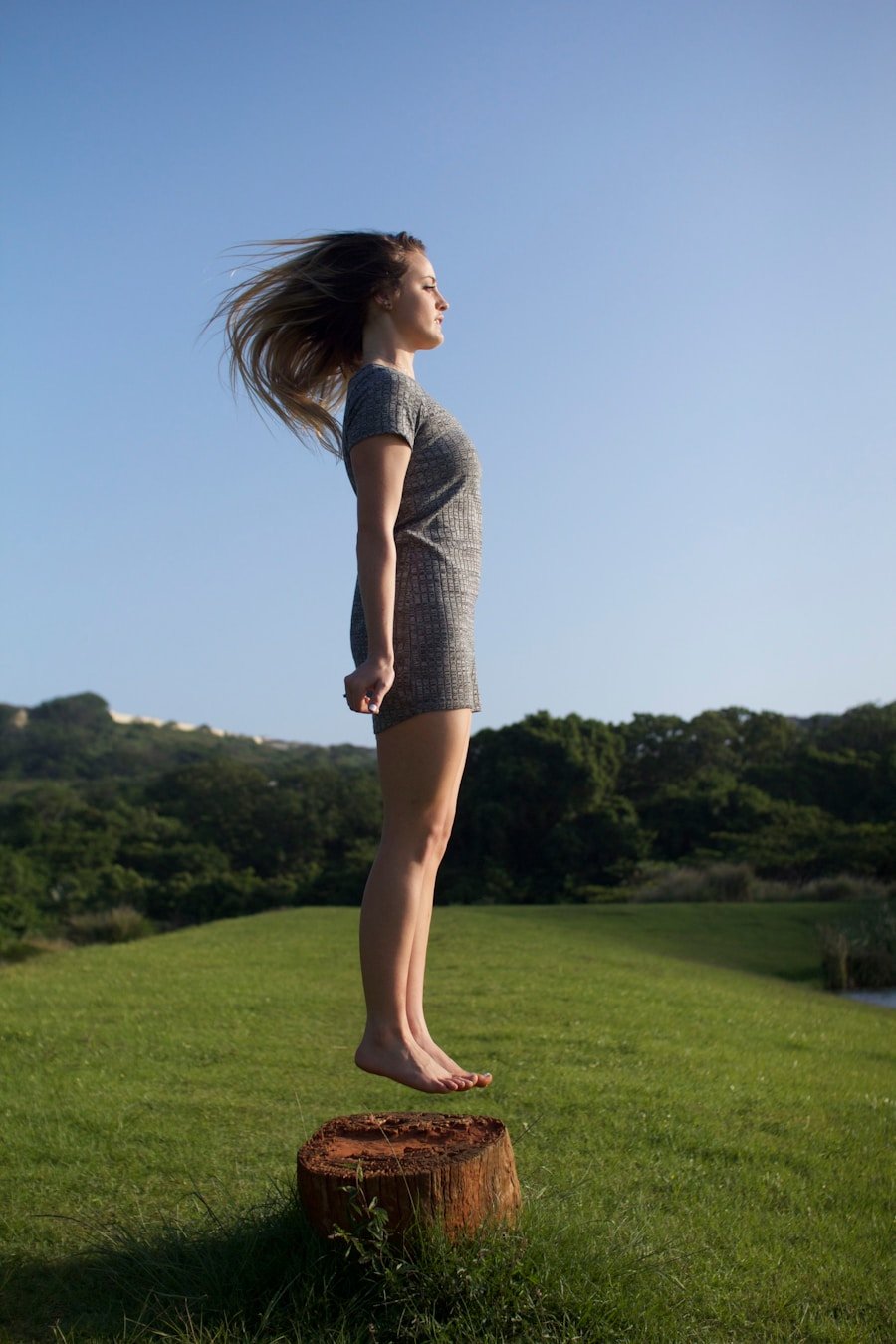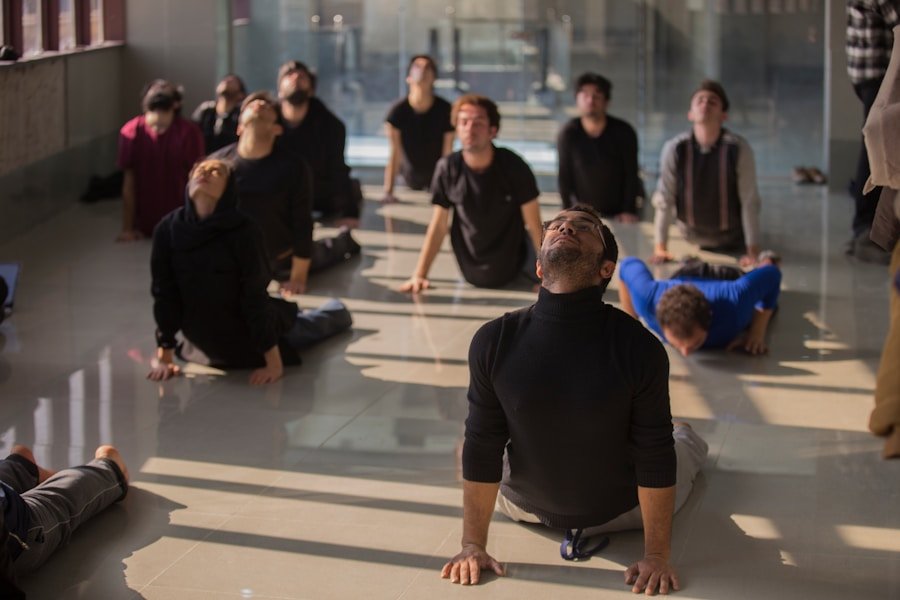This post may contain affiliate links. When you purchase through links on our site, we may earn an affiliate commission.
Intuitive movement is a concept that resonates deeply with me, as it emphasizes the importance of listening to my body and allowing it to guide my physical expression. Unlike structured exercise routines that often dictate specific movements and sequences, intuitive movement encourages a more organic approach. I find that when I engage in this practice, I am more in tune with my body’s needs, emotions, and energy levels.
It’s a liberating experience that allows me to explore various forms of movement without the constraints of traditional fitness paradigms. As I delve deeper into intuitive movement, I realize that it is not just about physical activity; it is also a form of self-discovery. Each session becomes an opportunity to connect with my inner self, to explore what feels good and what doesn’t.
I often find myself experimenting with different movements—flowing like water, grounding like a tree, or even expressing joy through dance. This exploration fosters a sense of freedom and creativity that invigorates my spirit and enhances my overall well-being. By embracing intuitive movement, I cultivate a deeper understanding of my body and its unique rhythms.
Key Takeaways
- Intuitive movement involves listening to your body and allowing it to guide your movements.
- Setting intentions for your practice can help you stay focused and motivated.
- Designing a personalized routine ensures that your movement practice meets your specific needs and goals.
- Incorporating mindfulness and breathwork can enhance the mind-body connection during movement.
- Exploring different types of movement can help you find what resonates best with you and keeps your practice interesting.
Setting Intentions for Your Practice
Setting intentions for my movement practice has become a vital part of my journey. Before I begin, I take a moment to reflect on what I hope to achieve during my session. This could range from seeking clarity in my mind to releasing pent-up emotions or simply enjoying the act of moving.
By establishing clear intentions, I create a focused mindset that enhances my experience and allows me to connect more deeply with my body. I often write down my intentions in a journal or recite them aloud as a form of affirmation. This practice not only solidifies my goals but also serves as a reminder throughout my movement session.
For instance, if I set the intention to cultivate joy, I find myself gravitating towards movements that feel light and playful. Conversely, if I aim to release tension, I may incorporate slower, more grounding movements. This intentionality transforms my practice from a mere physical activity into a meaningful ritual that nurtures my mind, body, and spirit.
Designing a Personalized Routine

Creating a personalized routine is an exciting aspect of my intuitive movement journey. I recognize that no two bodies are alike, and what works for someone else may not resonate with me. Therefore, I take the time to explore various movements and styles that align with my preferences and needs.
This process involves trial and error, but it is also incredibly rewarding as I discover what truly nourishes me. In designing my routine, I consider factors such as my energy levels, emotional state, and physical capabilities on any given day. Some days, I may feel energized and ready to engage in dynamic movements like dance or martial arts, while other days call for gentler practices like yoga or stretching.
By honoring these fluctuations, I create a routine that is adaptable and responsive to my body’s signals. This flexibility not only enhances my enjoyment but also fosters a deeper connection with myself as I learn to trust my instincts.
Incorporating Mindfulness and Breathwork
| Metrics | Data |
|---|---|
| Number of Mindfulness Sessions | 50 |
| Participants’ Satisfaction Rate | 90% |
| Reduction in Stress Levels | 30% |
| Improvement in Focus and Concentration | 25% |
Mindfulness and breathwork are integral components of my intuitive movement practice. As I move, I consciously bring my awareness to the sensations in my body and the rhythm of my breath. This mindfulness allows me to stay present in the moment, fully experiencing each movement without distraction.
I find that when I focus on my breath—taking deep inhalations and slow exhalations—I can release tension and cultivate a sense of calm. Incorporating breathwork into my routine enhances the overall quality of my practice. For instance, when I feel anxious or overwhelmed, I use breath techniques to ground myself before moving.
By inhaling deeply through my nose and exhaling slowly through my mouth, I create space for relaxation and clarity. This practice not only enriches my movement experience but also serves as a powerful tool for managing stress in my daily life.
Exploring Different Types of Movement
The beauty of intuitive movement lies in its diversity; there are countless ways to express oneself physically. I have found joy in exploring various types of movement, each offering unique benefits and experiences. From dance to martial arts, yoga to tai chi, every form has its own rhythm and energy that resonates with me differently.
This exploration allows me to expand my horizons and discover new ways to connect with my body. One of my favorite ways to explore movement is through dance. Whether it’s freestyle dancing in my living room or taking a class in a new style, dance allows me to express emotions that words often fail to capture.
The music becomes a guiding force, inspiring me to move freely and authentically. On the other hand, practices like yoga provide a grounding experience that encourages mindfulness and flexibility. By alternating between different types of movement, I keep my practice fresh and exciting while nurturing various aspects of my physical and emotional well-being.
Adapting Your Practice to Your Needs

Adapting my practice to meet my needs is essential for maintaining a sustainable relationship with movement. Life is unpredictable, and there are days when I may feel fatigued or emotionally drained. On those days, I remind myself that it’s okay to modify my routine or even take a break altogether.
Listening to my body’s signals is crucial; it allows me to honor its wisdom rather than pushing through discomfort or fatigue. For instance, if I wake up feeling sluggish, I might opt for gentle stretching or restorative yoga instead of an intense workout. Conversely, on days when I feel energized and inspired, I may dive into a more vigorous dance session or an outdoor run.
This adaptability not only prevents burnout but also reinforces the idea that movement should be a source of joy rather than obligation. By tuning into my body’s needs, I cultivate a compassionate approach to self-care that enhances both my physical health and emotional resilience.
Creating a Sacred Space for Movement
Creating a sacred space for movement has transformed the way I engage with my practice. Whether it’s a corner of my living room or an outdoor area surrounded by nature, having a designated space allows me to cultivate an atmosphere conducive to exploration and self-expression. I often adorn this space with items that inspire me—soft lighting, calming scents, or meaningful objects that evoke positive memories.
When I step into this sacred space, I feel an immediate shift in energy. It becomes a sanctuary where I can let go of external distractions and fully immerse myself in the present moment. The environment plays a significant role in enhancing my experience; it invites me to move freely without judgment or inhibition.
By creating this intentional space for movement, I honor the practice as something sacred—a time for self-discovery and connection with my body.
Reflecting and Adjusting Your Practice
Reflection is an essential part of my intuitive movement journey. After each session, I take time to assess how I felt during the practice—what worked well and what didn’t resonate as much. This reflection allows me to gain insights into my evolving relationship with movement and helps me identify patterns in my energy levels or emotional states.
As I reflect on my experiences, I am often inspired to make adjustments to my routine based on what I’ve learned about myself. Perhaps certain movements felt particularly liberating while others felt forced; this feedback guides me in refining my practice over time. By embracing this iterative process of reflection and adjustment, I cultivate a dynamic relationship with movement that evolves alongside me.
Ultimately, this journey becomes less about achieving specific goals and more about honoring the ongoing exploration of self through intuitive movement. In conclusion, intuitive movement has become a transformative practice in my life—a journey of self-discovery that encompasses understanding, intention-setting, personalization, mindfulness, exploration, adaptability, sacredness, and reflection. Each aspect contributes to a holistic approach that nurtures not only my physical well-being but also my emotional and spiritual growth.
As I continue on this path, I remain open to new experiences and insights that will further enrich my relationship with movement and myself.
If you are looking to create a serene home environment to complement your intuitive movement practices, you may find inspiration in the article “Your Cozy Nook Awaits: A Guide to Crafting a Serene Home Environment” on A to Z Cozy Corner. This article offers tips and ideas for creating a space that promotes relaxation and mindfulness, perfect for incorporating movement practices into your daily life.
FAQs
What are intuitive movement practices?
Intuitive movement practices are physical activities that prioritize listening to the body’s natural cues and responding with movement that feels good and nourishing. These practices can include yoga, dance, walking, stretching, and other forms of mindful movement.
Why is it important to design intuitive movement practices for daily life?
Designing intuitive movement practices for daily life can help individuals cultivate a deeper connection with their bodies, reduce stress, improve flexibility and strength, and enhance overall well-being. These practices can also promote mindfulness and self-awareness.
How can intuitive movement practices be incorporated into daily life?
Intuitive movement practices can be incorporated into daily life by setting aside dedicated time for movement, integrating movement into daily routines (such as stretching in the morning or taking a walk during lunch), and being mindful of the body’s needs throughout the day.
What are some examples of intuitive movement practices?
Examples of intuitive movement practices include yoga, tai chi, qigong, dance improvisation, mindful walking, gentle stretching, and any form of movement that encourages listening to the body and moving in a way that feels natural and nourishing.
What are the benefits of incorporating intuitive movement practices into daily life?
Incorporating intuitive movement practices into daily life can lead to improved physical and mental well-being, increased body awareness, reduced stress, enhanced flexibility and strength, and a greater sense of connection with oneself. These practices can also promote relaxation and mindfulness.

 using WordPress and
using WordPress and 
No responses yet